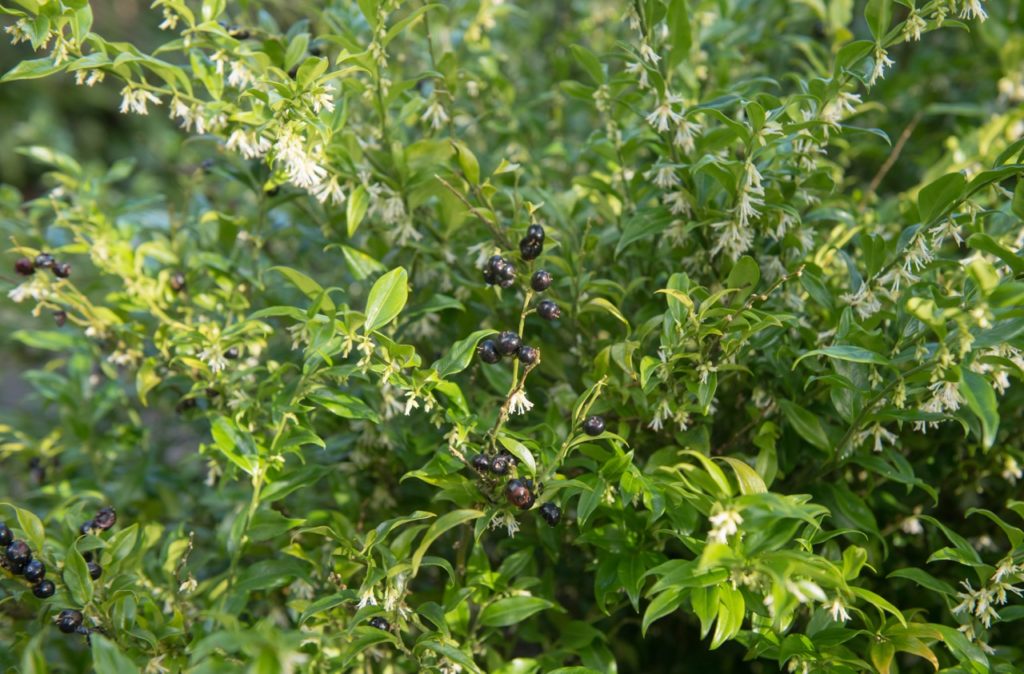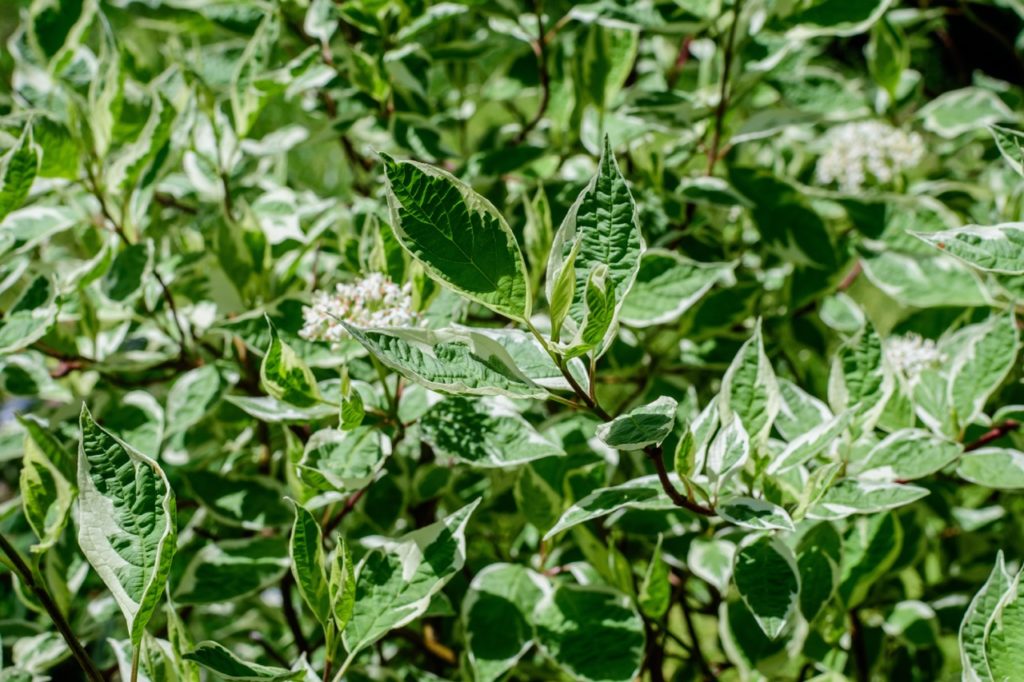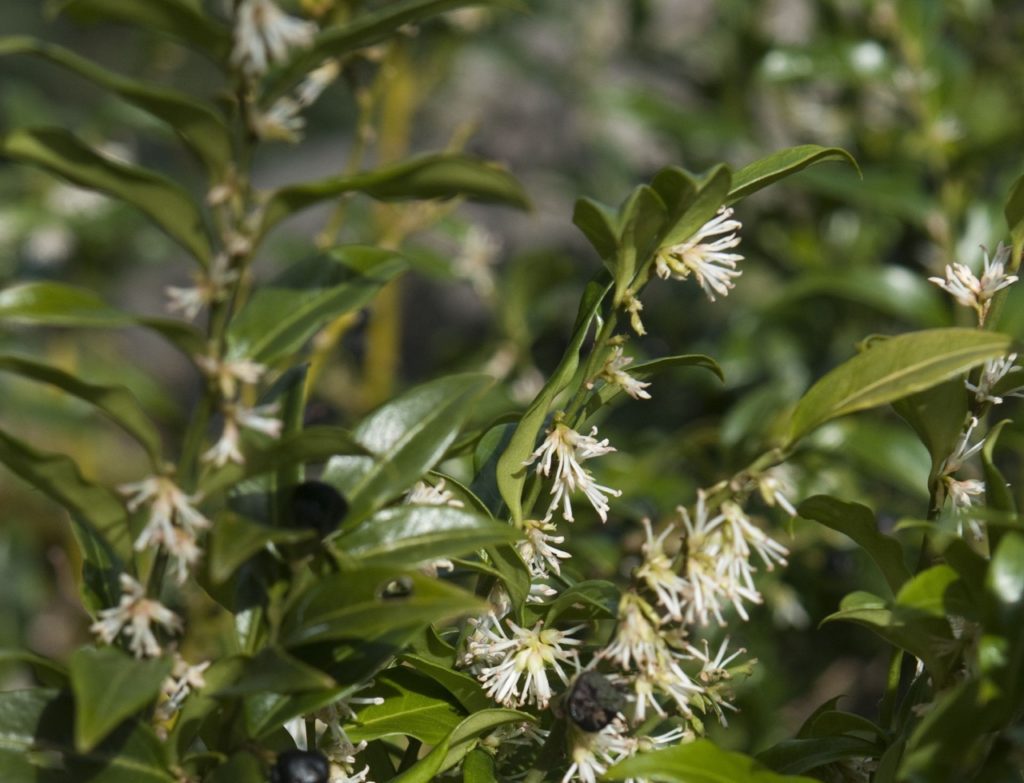SHRUBS > SARCOCOCCA

Ed is a horticultural therapist, professional gardener and writer. Ed has a BSc in Occupational Therapy from Coventry University and a Diploma in Social and Therapeutic Horticulture (DipSTH) via Thive, the RHS and Pershore College. Ed runs a community kitchen garden in West Sussex, where he leads horticultural therapy sessions.
Reviewed By COLIN SKELLY

Colin is a Horticulturist and Horticultural Consultant with experience in a range of practical and managerial roles across heritage, commercial and public horticulture. He holds the Royal Horticultural Society’s Master of Horticulture award and has a particular interest in horticultural ecology and naturalistic planting for habitat and climate resilience.
SARCOCOCCA GUIDES
Sarcococca confusa, or sweet box as it is often known, is a great shrub for providing winter interest during the colder months.
Around the festive time in December and January, it produces small and delicate white flowers that are sweetly scented and give the plant its other name – Christmas box.
A tough and easy-to-grow evergreen shrub, it needs little care and grows equally well when planted in a border or in a pot.
Overview
| Botanical Name | Sarcococca confusa |
| Common Name(s) | Sweet box / Christmas box |
| Plant Type | Shrub |
| Native Area | Asia |
| Hardiness Rating | H5 |
| Foliage | Evergreen |
| Flowers | White |
| When To Plant | All year round |
| When To Prune | February-March |
Sunlight
Preferred
Full Sun or Partial Shade
Exposure
Sheltered
Size
Height
1.5 – 2.5M
Spread
1 – 1.5M
Bloom Time
Winter
Soil
Preferred
Most fertile soils
Moisture
Moist but well-drained
pH
Any
Sarcococca confusa is a member of the Buxaceae family and was introduced to the United Kingdom from China in the early 19th century.1Sarcococca Confusa (sweet Box). (2021, April 7). Birmingham Botanical Gardens. Retrieved March 23, 2023, from https://www.birminghambotanicalgardens.org.uk/plants-of-the-month-december/sarcococca-confusa/
A group of hardy and reliable shrubs, sarcococcas not only provide some evergreen interest all year round, but their flowers can brighten up the darkest of winter days.

Sarcococca shrubs are tough and will cope with a fair amount of neglect and pollution, making them perfect for a front garden or city courtyard.
S. confusa is one of the densest growing varieties and can grow, if given room, to an eventual height and spread of 2m.
Having been awarded the Award of Garden Merit by the Royal Horticultural Society (RHS), it has proven to perform reliably well in the garden.
Planting
Sarcococca shrubs are widely available and are sold potted up in a range of pot sizes from 9cm all the way up to 50L plus.
Sarcococca tends to be an unfussy shrub to grow and will cope with almost any soil as long as it is moist and free-draining.
To plant directly into the ground, prepare a hole twice as wide as its root ball and at least as deep.

Add some well-rotted organic matter and, if the soil is heavy, some horticultural grit to open up the soil and increase drainage.
Backfill with soil, firm in gently and water in well.
If planting in a pot or container, make sure drainage holes are present and add some crocks or gravel to the base of the pot.
Part fill with a free-draining potting mix for shrubs and plant the sarcococca at the same depth it previously was, then backfill with soil and water well.
Where To Plant
Sarcococcas will tolerate almost any position as long as it is sheltered.
Preferring full or partial shade, they are ideal for a troublesome north-facing spot or in the shade of a tree.

However, they can also be grown in full sun as long as the soil is kept from drying out.
The scent of the sweet box in flower is so special that it’s a shame not to appreciate it, which is why they are so often planted near a porch or doorway so they can be enjoyed when passing.
When To Plant
Commonly available as a potted shrub, sarcococcas can be planted at almost any time of year, except when the ground is frozen or waterlogged.
Care must be taken if planting during the warmer months though as they will need enough moisture to help them get established and not dry out.
Sweet Box Plant Care
Soil Requirements
S. confusa is a tolerant shrub and will cope well when grown in most soil types, whether clay, loam, chalk or sand, as long as it is free-draining and can be kept moist.
Pruning
S. confusa is an easy shrub to grow and care for and pruning is not strictly necessary.

However, they can be pruned with a clean and sharp pair of secateurs or shears right after flowering in February or March to keep them to size and shape.
“I have a low S. confusa hedge by my front door as its scent, at a time of year when little else is flowering, is so welcome,” shares Horticultural Consultant Colin Skelly.
“The scent hangs on the breeze on cool, still late winter days. After flowering, in March or April I cut the hedge back, removing all of the previous season’s growth.
“It will flower again on the new season’s growth.”
Overwintering
Sweet box plants have an H5 hardiness rating, which means they are usually able to withstand temperatures as low as -10 to -15°C and are able to survive even a harsh winter in most parts of the UK.
Common Problems
S. confusa tends not to be affected by pests or diseases and usually grows for many years relatively carefree.
However, when grown in a pot or container it can be easy for them to dry out, with their leaves turning crinkly and yellow or brown, unless watered deeply and often during the summer months.
Companion Planting
Sweet box shrubs are happiest when grown in the shade and are often grown with other plants with similar growing requirements.

Growing to an eventual height and spread of 2m, they are perfect for the back of a border – and combine well with other winter interest plants such as cornus and hellebores.
Being evergreen, they are often used as a screening plant and grown as a low informal hedge.
Propagation
S. confusas sucker freely and can be propagated in a number of different ways.
Perhaps the easiest method of increasing your sweet box stock, either for the garden or to give away to family and friends, is by using the suckers.
Growing under the foliage around the base of the plant, these suckers can either be cut off a few centimetres under the soil surface with a sharp knife or pulled up.
These suckers usually have some short white roots attached and can be potted up and grown on until large enough to plant out.
Sweet box can also be propagated by semi-hardwood cuttings taken at the end of the summer or in early autumn.

10-15cm long cuttings can be taken from any healthy growth, but need to include some soft green growth at the top and harder wood at the bottom.
Remove all but the top 3-4 leaves and cut the base of the cutting square, just below a leaf node.
Insert the cuttings halfway into a pot filled with free-draining potting mix and water well.
Cover with a clear plastic bag to limit any moisture evaporating and keep out of direct sunlight until rooted, after which they can be potted on.
Sarcococca can also be grown from seed, however, this tends to be the least preferred option for home gardeners as they grow so well from suckers and cuttings.
FAQ’s
How Quickly Does Sarcococca Confusa Grow?
S. confusa is rather frustratingly slow to grow and can take as long as 5-10 years to reach that of a decent-sized shrub for the back of a border.

This is why larger specimens available for sale are often rather expensive.
How Tall Does Sarcococca Grow?
Sarcococca varieties can appear relatively similar yet can grow to very different sizes, with confusa being the largest of them all, potentially reaching up to 2m.
S. ruscifolia with its dark red berries tends to grow to half the size of S. confusa to a final height of 1m.

For smaller spots or containers, S. hookeriana ‘Winter Gem’ has a more dwarfing habit and a more manageable eventual size of 60cm tall.
When Should It Be Fertilised?
To promote healthy growth, Sarcococcas can benefit from an annual application of slow-release fertiliser and a thick layer of mulch in spring.
References
- 1Sarcococca Confusa (sweet Box). (2021, April 7). Birmingham Botanical Gardens. Retrieved March 23, 2023, from https://www.birminghambotanicalgardens.org.uk/plants-of-the-month-december/sarcococca-confusa/

